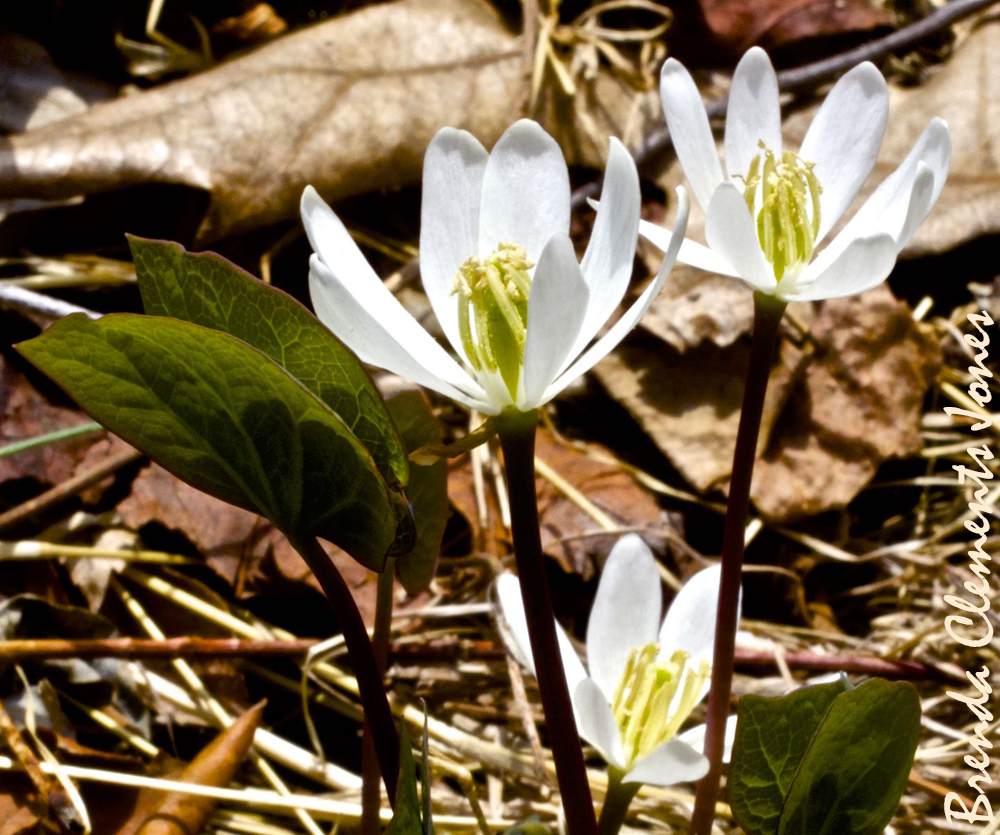
Jeffersonia (Jeffersonia diphylla). In 1792 the botanist Benjamin Smith Barton named this plant after Thomas Jefferson. In 1807 Jefferson had Jeffersonia growing in one of the oval flower beds of Monticello. I’m proud to have something in common with my neighbor Thomas.

Within a matter of four weeks I’ll be searching for these little signs of life. Hints of spring sprouting up from the garden’s soil.

It took missing the arrival of Jeffersonia for a few springs before I etched into my memory to be on the alert. They arrive when there is still snow around. In my gardens generally mid to late March.

Jeffersonia is native to eastern North America but is listed as a threatened or endangered plant in Georgia, Iowa, New York, and New Jersey because of habitat destruction and invasive species.

The flower of Jeffersonia is atop a bare stalk. It’s composed of eight white petals which as a bud were protected by four sepals. Two of those fading sepals can be seen here drooping below the flower, a washed out pale purple with a slight hint of green.

The petals surround yellowish stamens and in the center a green ovary. Quite the fleeting bloom, the petals fall after just a couple days.

A common name for Jeffersonia, Twinleaf, comes from the shape of the leaf. Open butterfly wings. Each pair, one leaf nearly split in two.

The flowers as they decline produce a fruit. A fruit that brings a smile to my heart. Is it a fruit or actually a smiley outer space alien?

The seeds inside this capsule each have an appendage called an elaiosome which attract ants with its lipids and proteins. The ants carry the seeds to their underground nest where the elaisomes are fed to their larvae. After the feeding, the seeds are discarded in the ant’s nest to their “trash room.” The perfect place for seeds to grow. ANT FARMERS! If you would like to add a fancy word to your vocabulary, this whole process of “ant farming” is called myrmecochory.

2 responses to “Jeffersonia or Twinleaf”
I am loving your blogs, Brenda! Hoping that I can somehow keep the information in my brain long enough to witness some of what you have shared. As one who delights in finding the tiny treasures when I hike in the woods, your posts and blogs have opened my eyes to things I might otherwise miss. Thank you for taking the time to write these, and for so generously sharing your beautiful photos!
Oh Kathy! Thanks bunches for your precious words. As a current student of Spanish, I know what you are saying about information staying in your brain for any length of time! And tiny treasures in the woods. You are really speaking my language! There are SO MANY to be discovered. So many hiding and giggling as they wait for us to find them as they play hide and seek!
Thank you so very much for reading my posts. I thoroughly enjoy sharing my finds.
Bren